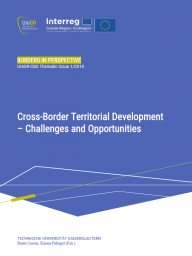Borders in Perspective Vol. 1

The spatial development of cities and regions is influenced by trends such as climate change, demographic shifts and structural change, which do not stop at administrative boundaries but shape the development of larger territories. Additionally, often functional and thematic interrelations exist across national borders that lead to frequent exchanges and interdependencies of territories and its citizens. Therefore, the coordination of the cross-border territorial development is crucial for a future-oriented and sustainable spatial development. Due to its great importance, this topic is examined from different perspectives by European scientists in the first issue of Borders in Perspective.

